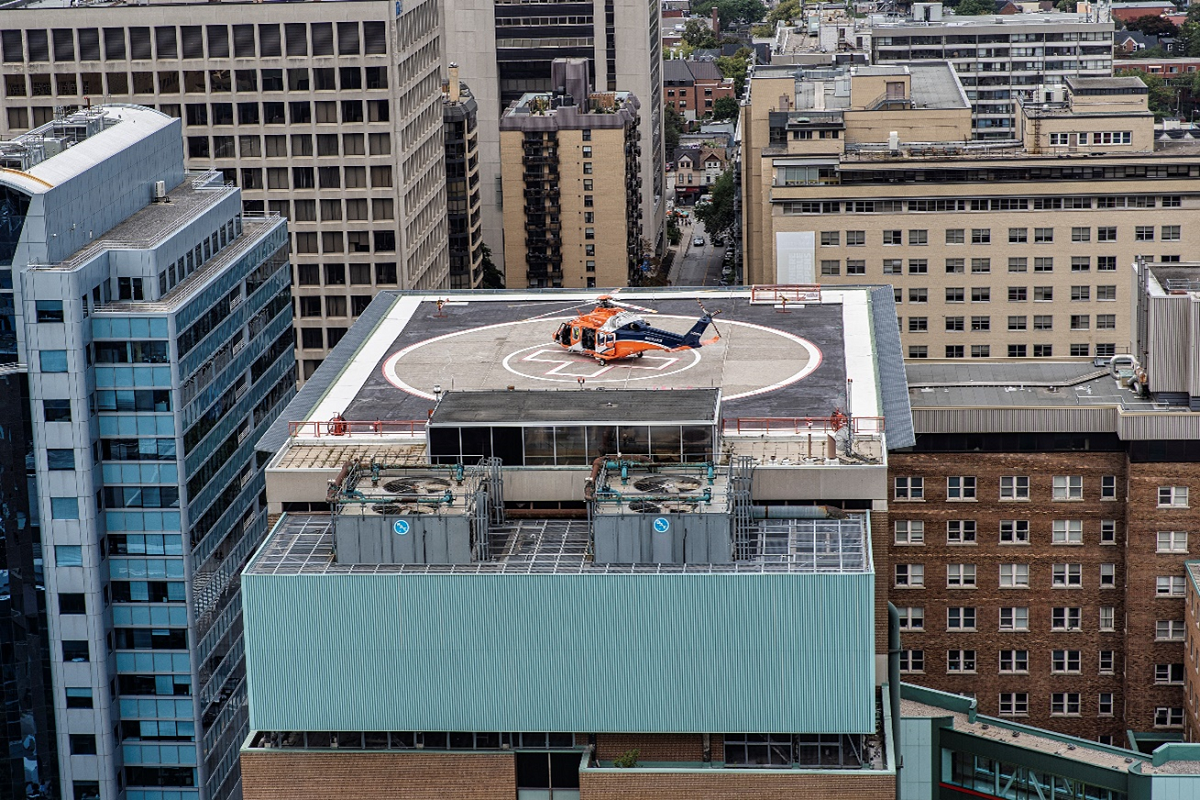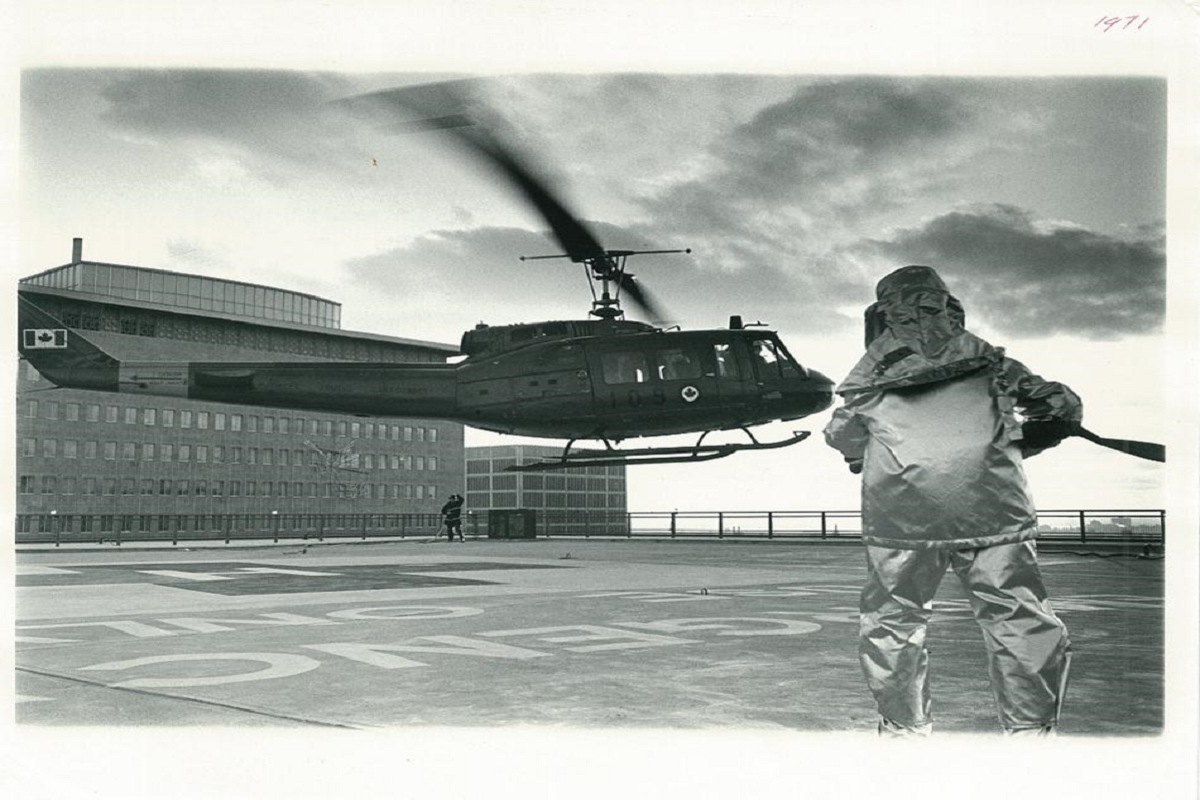SickKids’ helipad: connecting patients to critical, lifesaving care for over 50 years
Summary:
In 1972, SickKids opened the first rooftop helipad in Canada. By breaking down geographic boundaries, the helipad helped to solidify SickKids’ role as a leading paediatric hospital in Ontario.

In 1972, The Hospital for Sick Children (SickKids) opened the first rooftop helipad in Canada. By breaking down geographic boundaries, the helipad helped to solidify SickKids’ role as a leading paediatric hospital in Ontario.
While landing a helicopter on top of a building may seem routine today, things were a bit trickier to navigate 50 years ago. Before SickKids’ plan for a helipad was approved there were several uncertainties and hurdles to overcome. The process of operationalizing the helipad required working through a myriad of new government regulations and safety procedures. These safety procedures even included stationing a fire crew on the helipad while flights were taking place!

The delays and challenges were well worth it, and in 1972 the helipad received its first patient. The patient was a newborn baby girl who flew into Pearson International Airport from Thunder Bay in an incubator and was then swiftly transported to SickKids via helicopter. Thanks to the helipad, this patient arrived at SickKids in record time: the project was a clear success.
Before SickKids could receive patients via helicopter, those living outside of the Greater Toronto Area (GTA) had a difficult time getting access to the specialized urgent care SickKids offers. Children and youth facing complex medical emergencies outside of the GTA were forced to risk crucial minutes by travelling to SickKids via land ambulance or go to a nearby hospital lacking specialized care. The SickKids helipad was built with the goal of minimizing these geographical boundaries and improving patient outcomes. By allowing helicopters to fly patients in, the helipad greatly extended the geographic reach of SickKids and made critical care more accessible to patients across Ontario.
“The addition of the helipad was significant,” says David Wencer, Archivist at SickKids. “It told people that SickKids is a hospital for the entire province, not just for Toronto.”
Helipad services neighbouring hospitals as well
Beyond connecting SickKids to the entire province, the helipad also provided these same benefits to neighboring hospitals. Through a vast array of underground tunnels, SickKids connects to other major hospitals on Toronto’s hospital row, such as University Health Network and Mount Sinai Hospital. Using the tunnels, staff from Toronto’s hospital row and paramedics can move their patients from SickKids’ helipad to their respective hospital without ever having to step foot outside. As a result, Toronto’s hospital row became more connected to the province than ever before.
Transporting critically ill patients is always a race against the clock. In partnership with ORNGE, Ontario’s air ambulance service, SickKids’ Acute Care Transport Service team (ACTS) provides specialized paediatric care, ensuring critically ill patients can get to SickKids swiftly and safely.
Fifty years later, the helipad continues to play a pivotal role in how SickKids cares for patients and is emblematic of SickKids’ role as a leading paediatric hospital for the province and beyond.

